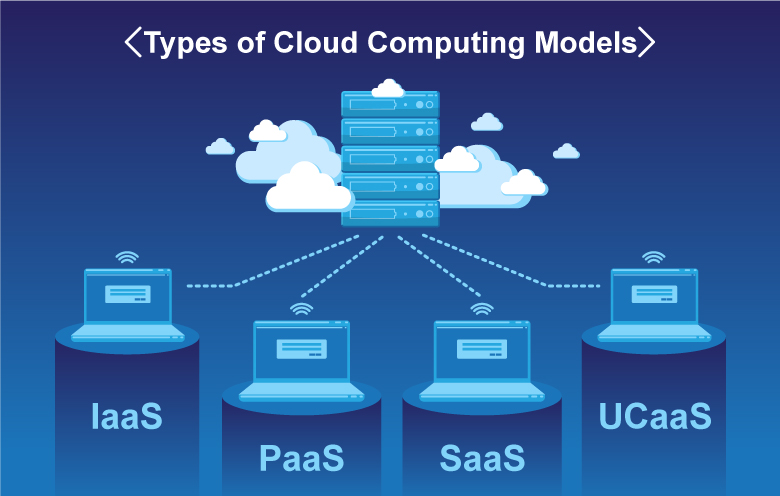Achieve Seamless Scalability With Cloud Provider
In the ever-evolving landscape of cloud services, attaining seamless scalability stands as a keystone for modern businesses seeking to remain adaptable and competitive. The capacity to effortlessly broaden or contract resources in action to changing needs is a pivotal advantage in today's hectic electronic atmosphere. By grasping the art of scalable cloud remedies, companies can not just enhance efficiency and streamline procedures but likewise lead the way for future development and development. The quest for smooth scalability with cloud services unveils a world of possibilities for those ready to embrace the transformative power of vibrant source administration.
Advantages of Cloud Scalability
Cloud scalability uses organizations the versatility to dynamically readjust resources based on demand, ensuring ideal performance and price effectiveness. One key advantage is the capacity to range resources up or down promptly in response to rising and fall workloads. This agility enables services to meet altering customer demands without over-provisioning resources, inevitably leading to cost financial savings. Scalability also boosts efficiency by making certain that systems can take care of boosted web traffic or work without experiencing downtime or slowdowns. By successfully allocating sources, organizations can maintain high levels of performance during peak times without unnecessary costs throughout quieter periods. Additionally, cloud scalability promotes innovation and trial and error by permitting services to quickly evaluate new ideas and scale them as needed. This flexibility motivates a culture of constant renovation and adaptation, making it possible for organizations to remain competitive in a quickly evolving market landscape. Eventually, the benefits of cloud scalability expand beyond price financial savings to include enhanced performance, agility, and technology.
Trick Functions for Scaling
Reliable scaling in cloud services counts on essential attributes that make it possible for organizations to readjust resources dynamically based on demand. An additional vital attribute is scalability, allowing systems to deal with increased work by adding resources flawlessly. On the whole, these key features collectively encourage companies to attain seamless scalability in cloud solutions.
Implementing Auto-Scaling Techniques
To effectively maximize resource allotment and adjust to differing workloads, organizations need to tactically apply auto-scaling methods in their cloud services infrastructure. Auto-scaling allows systems to instantly change the variety of compute sources based upon real-time demand. There are various auto-scaling strategies that organizations can employ, such as anticipating scaling, which makes use of historical information to forecast future resource needs, and reactive scaling, which reacts to present workload adjustments.

Ideal Practices for Scalability
For organizations aiming to improve their scalability in cloud solutions, executing ideal techniques is critical for optimum performance and source management. One key finest method is creating applications with a microservices style. This approach breaks down applications right into smaller sized, independent solutions that can be deployed, updated, and scaled separately, enabling for higher adaptability and scalability.
One more important method is utilizing containerization technology, such as Docker or Kubernetes. Containers allow the product packaging of applications and their dependencies right into separated systems, making it less complicated to scale parts individually and release them constantly across various atmospheres.
In addition, applying automated release and framework as code (IaC) can enhance scalability efforts (linkdaddy cloud services). Automation devices like Terraform or Ansible help in provisioning and managing sources effectively, minimizing hands-on errors and allowing quick scalability
Moreover, keeping track of performance metrics, setting up informs, and conducting normal capability planning are essential practices to guarantee aggressive scalability management. By adhering to these best methods, companies can attain smooth scalability in their cloud solutions while optimizing performance and resource utilization.
Surveillance Performance Metrics
When analyzing the effectiveness of cloud services scalability, very closely monitoring efficiency metrics is important for making certain optimal functionality and resource allocation. By constantly visit homepage tracking key efficiency indications (KPIs) such as feedback times, throughput, source, and latency use, companies can acquire beneficial insights into the wellness and performance of their cloud framework. Monitoring performance metrics enables the very early discovery of prospective bottlenecks or problems that could impact scalability, allowing proactive procedures to be required to resolve them prior to they escalate.

Verdict
Finally, accomplishing seamless scalability with cloud services is necessary for companies to maximize performance, boost development, and preserve high performance levels throughout peak times. By leveraging the advantages of cloud scalability, applying auto-scaling methods, making use of vital functions such as flexibility and automation, and complying with ideal methods like application design and performance surveillance, organizations can efficiently scale their systems while making best use of source utilization and performance.
The quest for smooth scalability with cloud solutions reveals a world of possibilities for those ready to embrace the transformative power of vibrant resource management.
Cloud scalability provides organizations the adaptability to dynamically adjust resources based on demand, making certain ideal performance and price performance. An additional crucial feature is scalability, allowing systems to manage raised work by including sources seamlessly.For companies intending to boost their scalability in cloud solutions, executing finest techniques is important for visit site ideal efficiency and source administration.When evaluating the efficiency of cloud services scalability, closely checking efficiency metrics is essential for making certain ideal functionality and source allowance.
Comments on “Keep Updated with the Cloud Services Press Release: Fads and Advancements”